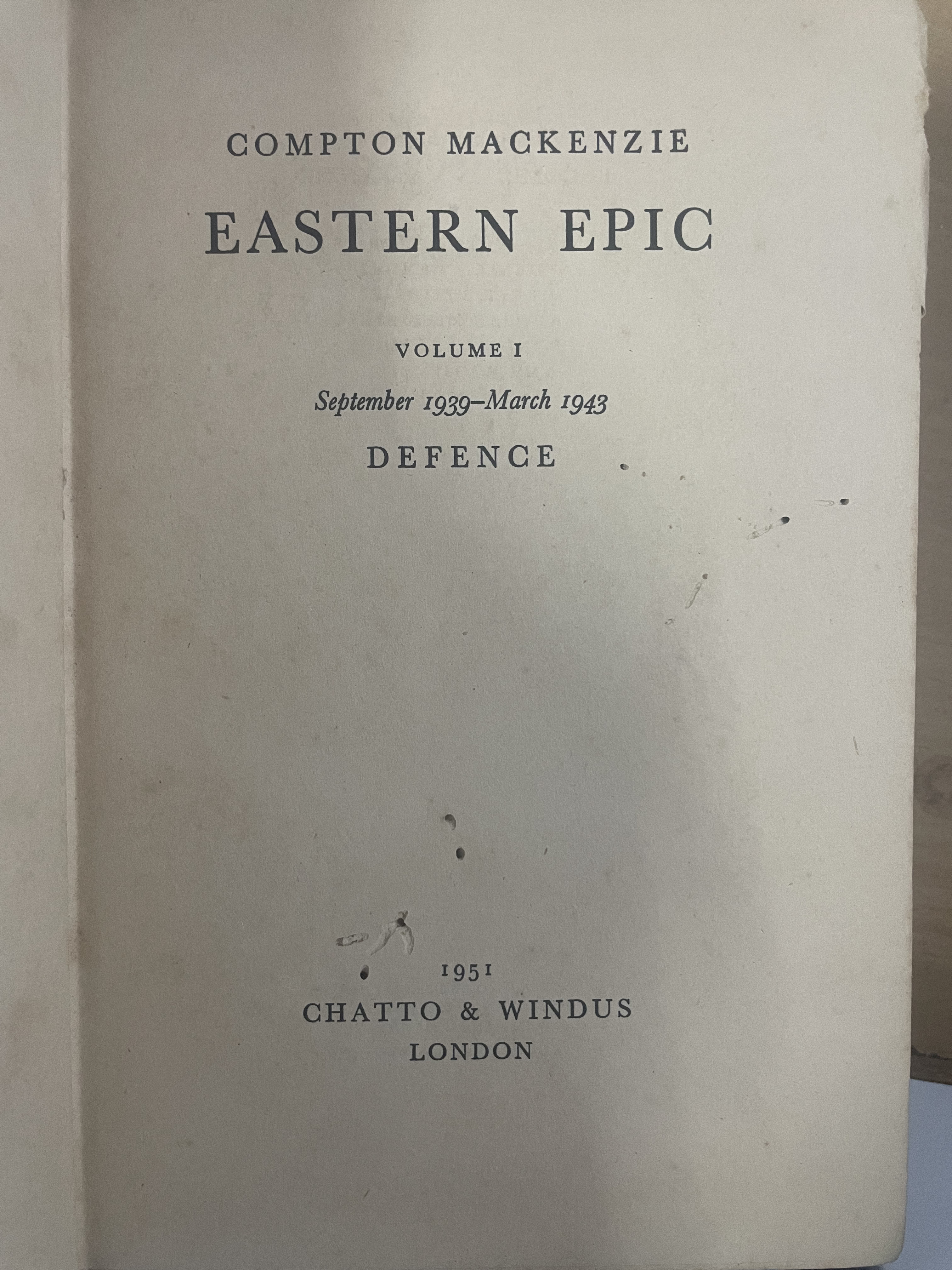Eastern Epic Vol I From 1939 to 1943

About
Summary
Exquisite
TOC
Details
Related
URL
Images
Overview
Eastern Epic, Volume I: September 1939-March 1943 by Compton Mackenzie, published in 1951, is the first volume of a commissioned history of the Indian Army during the Second World War. Mackenzie meticulously details India's contributions and efforts during the war, emphasizing accuracy.Eastern Epic aims to illustrate the vital role the old Indian Army played in the Second World War, comparable to the British Regular Army's role in the First World War. Mackenzie hoped readers would recognize this contribution by the end of the second volume. He dedicates Eastern Epic to the memory of the old Indian Army and the future of the new Armies of India and Pakistan, acknowledging Field-Marshal Sir Claude Auchinleck's influence and the statesmanship that secured goodwill between India and Pakistan.Eastern Epic, Volume I covers the period from September 1939 to March 1943. Mackenzie presents an overview of the pre-war conception of India's military role. The book likely details key events, battles, and strategic decisions involving the Indian Army during this period, providing insights into their contributions to the war effort in various theaters.
Importance of Book
Historical Record: It serves as a historical record of the Indian Army's contributions during a critical period of World War II.
Recognition of the Indian Army: The book aims to give due recognition to the Indian Army, whose efforts may have been underappreciated.
Understanding Military History: It provides insights into military strategies, campaigns, and the overall war effort from the perspective of the Indian Army.
Key Themes
The Role of the Indian Army: The central theme is the significant contribution of the Indian Army to the Allied war effort during World War II. Mackenzie emphasizes that the Indian Army's role was as vital as that of the British Regular Army in World War I.
The Transition of Armies: Mackenzie highlights the transition from the old Indian Army to the new Armies of India and Pakistan, noting the survival of traditions and the enthusiastic praise for the spirit and discipline of the new Armies.
Imperial Abdication and Statesmanship: The book touches upon the statesmanship involved in securing the goodwill of both India and Pakistan through an Imperial abdication.
Accurate Historical Detailing: Mackenzie emphasizes the importance of accuracy in detailing India's efforts during the war.
Cultural Significance
Acknowledging Indian Contributions: The book acknowledges the contributions of Indian soldiers in a major global conflict, promoting a sense of pride and recognition.
Preserving Military History: It contributes to preserving the history and traditions of the Indian Army, ensuring that their sacrifices and achievements are remembered.
Bridging Divides: By dedicating the book to both the old Indian Army and the new Armies of India and Pakistan, Mackenzie promotes goodwill and understanding between the two nations.
Effects on Society
Shaping Historical Perceptions: The book likely shaped perceptions of India's role in World War II, both in India and in the wider world.
Promoting National Identity: It may have contributed to a stronger sense of national identity and pride in India and Pakistan by highlighting the contributions of their soldiers.
Informing Public Discourse: Eastern Epic could have informed public discourse about the war, military history, and the relationship between India, Pakistan, and the British Empire.
Conclusion
specific details of the book's contents require direct access to the text, available information highlights its purpose in documenting and honoring the Indian Army's role in World War II.
Title
Eastern Epic Vol I From 1939 to 1943
Author
Compton Mackenzie
Name of Publisher
Chatto & Windus London
Publish Date
1951
Subject
Historical developments, cultural achievements, and significant figures
Vintage
1948-2000
Number of Pages
623
Category
Literary
Sub Category
Philosophy
Rarity
RARE
